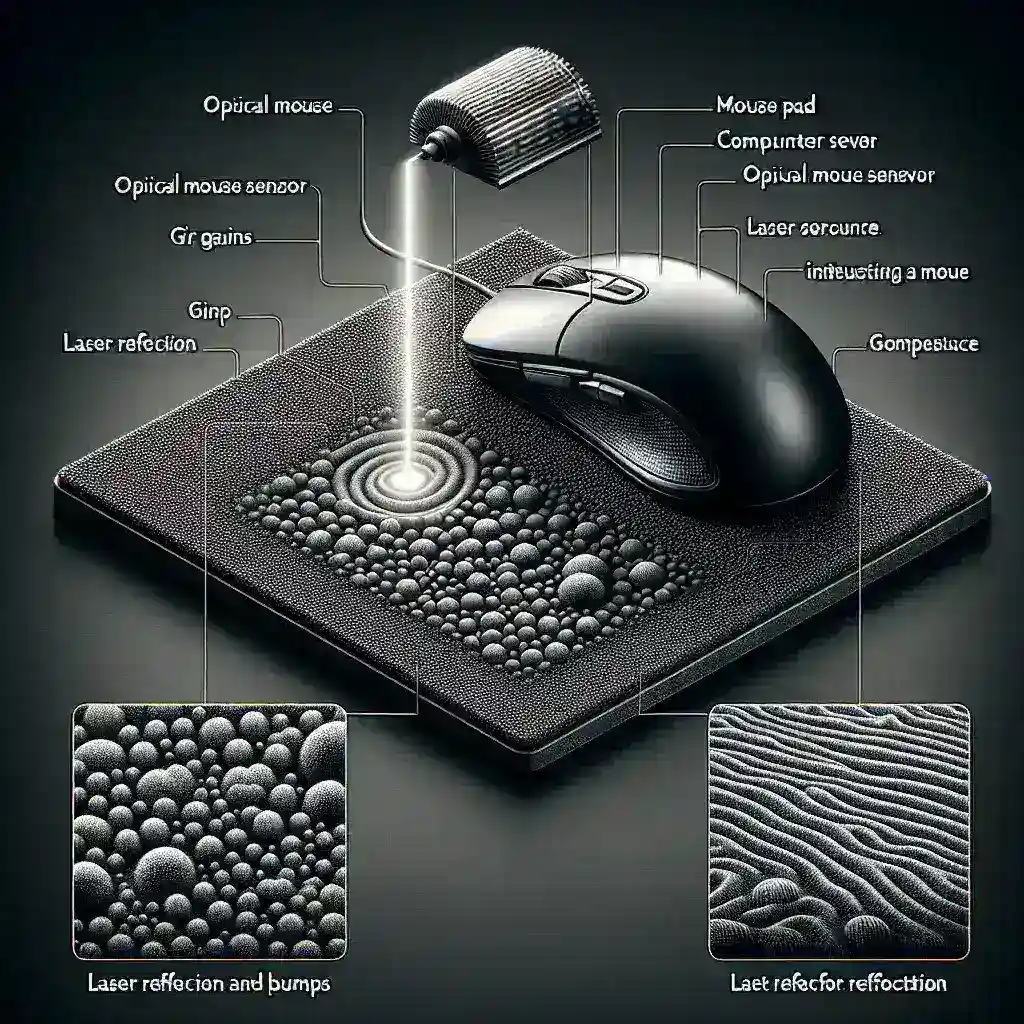Introduction
In the world of computing, especially among gamers and graphic designers, the surface texture of a mouse pad plays a pivotal role in enhancing performance. The right mouse pad not only complements your mouse but also significantly influences how efficiently you can move, click, and execute commands. Understanding how different textures affect performance can help you choose the best mouse pad for your needs. Below is a comparative overview of various mouse pad textures and their performance implications:
| Texture Type | Speed | Control | Precision |
|---|---|---|---|
| Hard | High Speed | Medium Control | High Precision |
| Soft Cloth | Medium Speed | High Control | Medium Precision |
| Hybrid | Varies | Varies | High Precision |
| Textured (Rugged) | Low Speed | High Control | Medium Precision |
Factors that Affect Mouse Pad Performance
1. Texture
The texture of a mouse pad can be broadly categorized into three types: rough, smooth, and hybrid. The choice of texture affects how the mouse interacts with the surface:
- Rough Textures: These surfaces provide more friction, allowing for enhanced control and stability. They are ideal for tasks requiring precision, such as graphic design or FPS gaming.
- Smooth Textures: These mouse pads allow the mouse to glide effortlessly across the surface, making them suitable for high-speed gaming where rapid movements are essential.
- Hybrid Textures: Blending qualities of both rough and smooth, hybrid mouse pads are versatile, accommodating a variety of use cases, from gaming to everyday office work.
2. Material
The material used in crafting mouse pads also plays a critical role:
- Cloth: Typically soft with varying textures, cloth pads provide a comfortable surface that maximizes control and precision.
- Plastic: Easy to clean and durable, plastic surfaces are often smooth and support high-speed movements.
- Glass or Metal: These surfaces can offer lesser friction, allowing for very smooth gliding, but might be less comfortable for extended periods of use.
3. Thickness
The thickness of a mouse pad can influence the way you use your mouse:
- Thin Pads: Offer stability and a lower profile that is friendlier for typing and desk setups.
- Thick Pads: Provide extra comfort and cushioning but can change the distance your hand must travel to move your mouse.
Measuring Performance Impact
1. Speed vs. Control
There is often a trade-off between speed and control. Hard mouse pads tend to favor speed, as they allow for quick movements with minimal resistance. However, they may sacrifice some control, especially when precise actions are required. Conversely, soft mouse pads excel in providing control, making them the favored choice for tasks demanding accuracy, albeit with slightly reduced speeds.
2. Precision in Gaming
Precision is crucial in various gaming scenarios. Professional gamers often prefer mouse pads that facilitate high precision, especially in competitive environments. A pad that provides a balance of speed and control, like a hybrid, often emerges as the best choice in these contexts. Studies show that variables such as surface imperfections can alter the tracking performance of a mouse, making the mouse pad’s surface consistency important.
Choosing the Right Mouse Pad
1. Assess Your Needs
Before purchasing a mouse pad, assess your primary uses:
- If you primarily play fast-paced FPS games, consider a hard surface that supports swift maneuvers.
- For strategy games where precision is critical, a high-control soft pad would suit you better.
- Hybrid pads can cater to multi-usage scenarios, offering versatility.
2. Test Different Textures
Whenever possible, test various mouse pads to determine which texture feels most comfortable and aligns with your performance expectations. Different preferences can arise from the user’s grip style or even the type of mouse used.
3. Long-Term Considerations
Consider durability and ease of maintenance. Mouse pads made from high-quality materials can withstand wear and tear and remain effective, while easily washable materials can keep your setup hygienic and aesthetically pleasing.
Conclusion
The surface texture of a mouse pad significantly impacts performance, influencing speed, control, and precision. By selecting the right type of texture, material, and thickness, users can enhance their gaming and computing experiences. The optimal choice ultimately depends on individual preferences and usage, but understanding the nuances between different mouse pad surfaces is crucial in making an informed decision for optimal performance.
